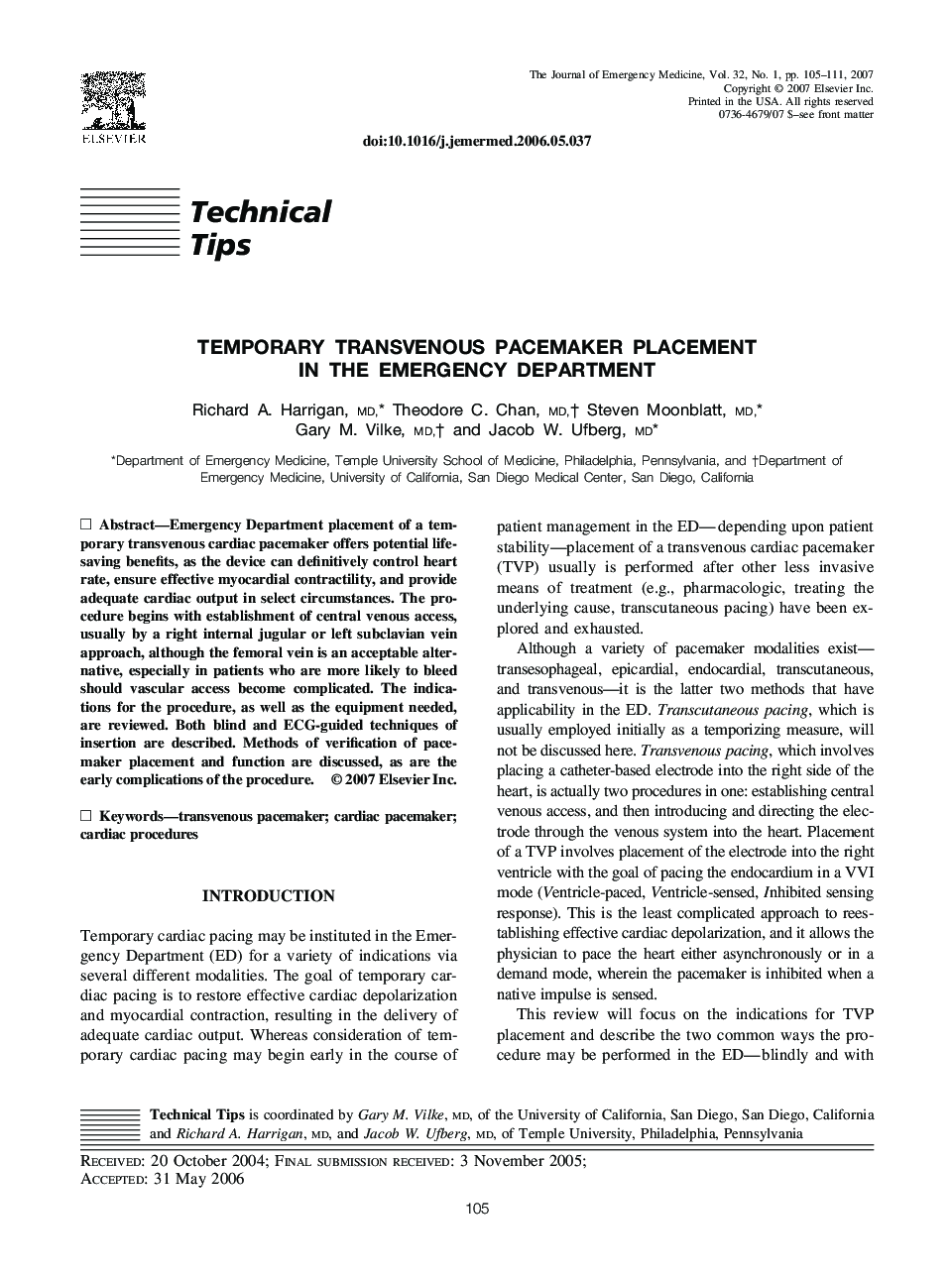| Article ID | Journal | Published Year | Pages | File Type |
|---|---|---|---|---|
| 3251265 | The Journal of Emergency Medicine | 2007 | 7 Pages |
Emergency Department placement of a temporary transvenous cardiac pacemaker offers potential life-saving benefits, as the device can definitively control heart rate, ensure effective myocardial contractility, and provide adequate cardiac output in select circumstances. The procedure begins with establishment of central venous access, usually by a right internal jugular or left subclavian vein approach, although the femoral vein is an acceptable alternative, especially in patients who are more likely to bleed should vascular access become complicated. The indications for the procedure, as well as the equipment needed, are reviewed. Both blind and ECG-guided techniques of insertion are described. Methods of verification of pacemaker placement and function are discussed, as are the early complications of the procedure.
